Hi all! This is Phil with a new issue of Phil vs. the Solver. In this section, I analyze the hands sent in by the audience, I say how I would play myself in their place, and then I consult with the solver and come to the final conclusions.
In today's hand, Hero is in middle position at the 6-max NL table. The player in first position raises to 2.2bb. The hero reraises to 7.4bb. The next players fold to the big blind, who 4-bets to 21bb! UTG folds, hero calls. This is a 4-bet pot with very tight ranges.
By the way, I think we could consider folding. We are still not in the late positions – these are UTG, MP and BB. The ranges are tight and calling with tens can be negative EV.
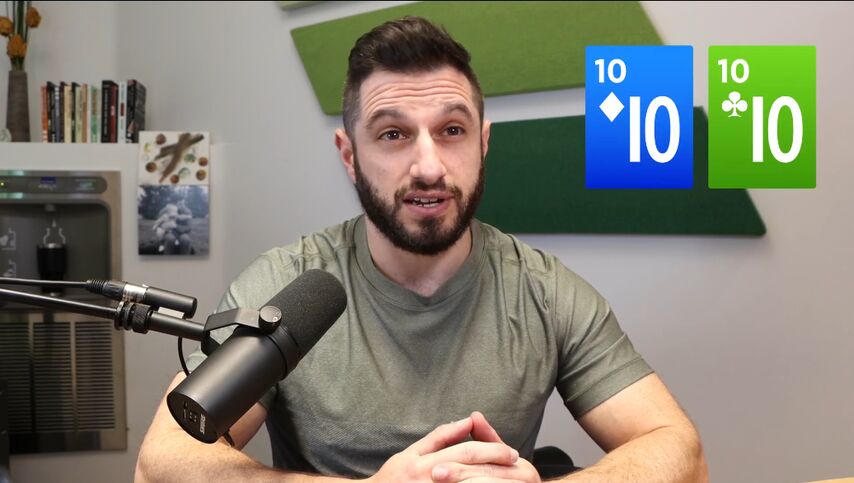
Flop:
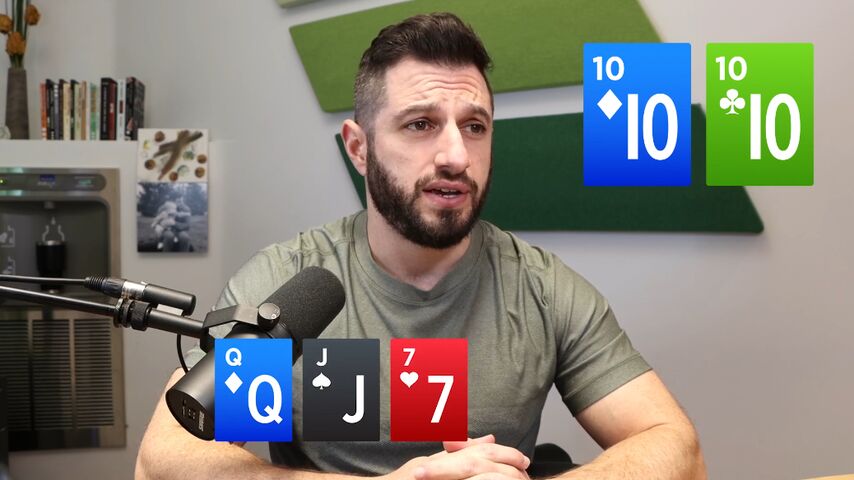
The big blind checks, which is quite unexpected for me. We check back.
Turn:
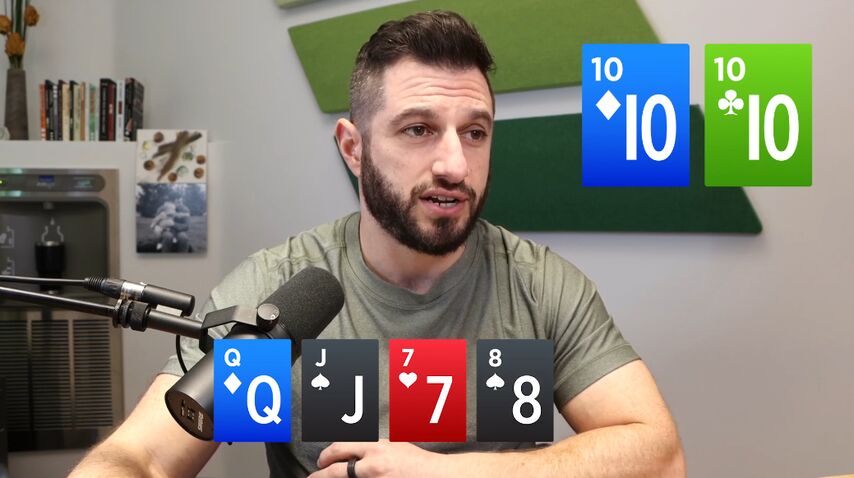
We pick up a gutshot. Check again, we check.
River:
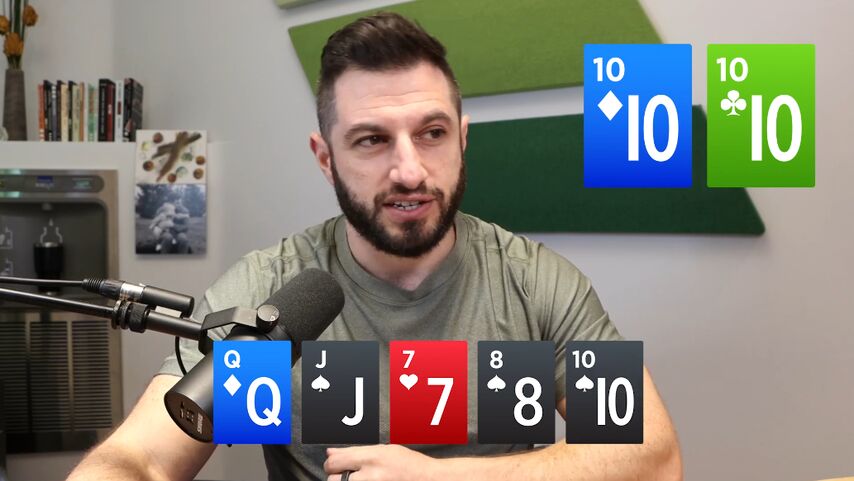
The big blind bets almost the pot... I think it's exactly the full pot if you subtract the rake. Hero decides to call.
I'll start with my own analysis of the situation. Our preflop is marginal. The flop and turn are played as standard. The river call is probably bad. And now the finer details.
Big blind 4-betting range: +, , suited, suited – These hands 4-bet close to 100% and then these 4-bet with a fraction of the weight – , Axs, Kxs and occasionally with weaker pocket pairs. According to the solver, our tens to this 4-bet is mostly folded, calls are made with little weight. So I was right that it was a marginal decision, close to folding, but calling doesn't seem to be a serious mistake. The decision can be made according to the opponent.
The flop suits his range perfectly, but for us it is so-so. On this texture, the big blind should c-bet almost 100% of hands. The preferred sizing is small: the pot is already bloated, it shouldn't be hard for us to stack off.
When the BB checks, we are in a part of the game tree that, in theory, almost doesn't exist. However, in practice, as we see, such situations also occur, and we also need to navigate in them.
Not facing a continuation bet, the solver always wants to check behind. So everything is fine here.
After the eight on the turn, the big blind prefers to check. Um, let's take another look at our preflop calling range... Wow! Turns out tens should fold a lot, but and , which we often 3bet with, mostly call. Sixes, by the way, too. I would guess that this is due to the fact that going out ten often gives our opponent a straight draw or a straight, and also because there are practically no cards with a seven or eight in the 4-betting range, and all our outs per set are clean.
After the BB checks on the turn, the solver checks tens again. Looks reasonable.
The river hits a flush and a series of straights. There shouldn't be many flushes, but there are a few combinations. But the nut straight is a very common combination, since makes up a significant portion of the 4-betting range.
According to the solver, the big blind checks almost his entire range in this situation. This surprises me, because he has a great advantage in . Let's take a look.
So, the player in the big blind has only 25% of combinations from a straight and stronger. Lots of sets, overpairs... there are second pairs and third pairs.
We have more flushes, more straights – of course our 4-bet calling range also has and also . We don't have any sets, except for a set of 10s – with the rest of the sets, we would always bet on the flop or turn. For the same reasons, we have very few two pairs. There are no overpairs either, of course – we almost never slowplay them preflop. Our entire range on the river can be divided into straights and better and top pairs and weaker. And very rarely we have a set of Queens.
When a solver makes big bet from a BB player, with tens he mixes calls and folds, but mostly calls, about 60-70% of the time.
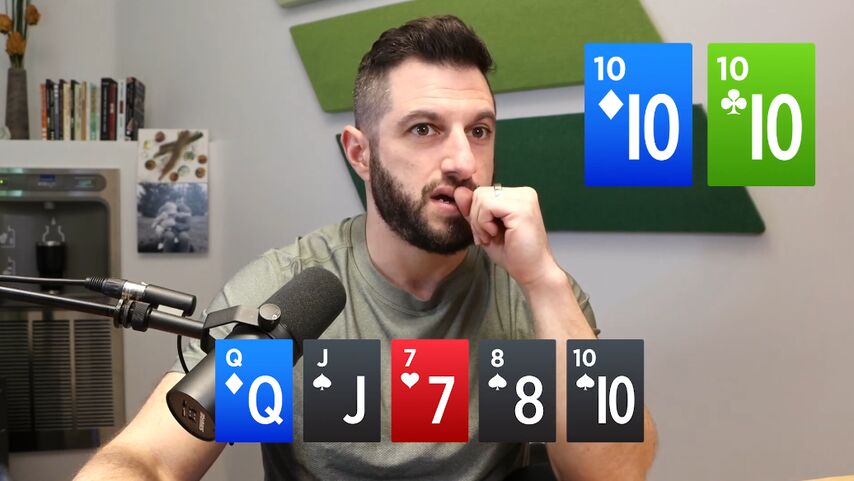
No, I absolutely do not like it, now I will explain why. For our call to be profitable, it requires the person in the big blind to bluff with all the combinations needed to balance. It is clear that not a single reasonable person would bet for value a hand weaker than a set of tens, also for full pot, on a board with a flush and four cards to a straight. So let's look for bluffs in a cold 4-betting range.
I've come up with AJs so far. I can't see what hands the solver is bluffing with because he refuses to bet at all, but this hand looks logical. So there are a few combinations of A4s, A5s, A6s, A7s, A8s that can play our line with some frequency, but it seems to me that people usually bet with them on one of the previous streets. Although if they do not bet, they can be used for a bluff on the river.
However, most people simply won't 4-bet these hands, including even AJs. But with they will always 4-bet and bet on the river. In general, they do not have enough combinations for a bluff.
We know that the solver prefers to bet a very wide continuation bet on this flop, but based on human logic and hand strength, it's reasonable to assume that the most obvious check candidate is . And if they 4-bet. Do people give up on the flop with A5s? Well I do not know. Most people prefer to bet once – they hope for the best, they hope that their opponent will fold tens or nines.
Here's what I think I'm trying to articulate: there are several forks in the tree of this hand where combinations needed to balance the river bluff will leave our opponent's range. Starting preflop where many people won't 4bet with A5s or AJs. On the flop, many will try to steal the pot with A5s or bet AJs just to keep things simple. Nothing special seems to happen on the turn, but the AJs and are often checked too on the river. With A5s, they will rather be set.
So we have 16 combinations . They are countered by three combinations of AJs and four combinations of A5s (one of which gives the nut flush). So far, there are 17 combinations of value for 6 combinations of bluffs. There must be at least nine bluffs to balance. Maybe if you take all hands like A5s... I don't think anyone will 4-bet bluff all suited aces, but if you add A4s, you get 18 value and 9 bluffs – almost what you need if Villain is holding chooses a line from the hand with all these combinations with the same frequency. But that's a very big "if"!
In general, to balance draws and bluffs, we have to draw an owl on the globe. Problems arise already at the stage of selecting hands with which, in principle, you can bluff, but with all these hands you still need to decide on a bluff. On the other hand, anyone who gets to the river with , will always put a bet in.
I think I've explained quite convincingly why I think our hand should be folded. The mixed strategy from the solver seems wrong to me in the human game.
And now let's look at the result!
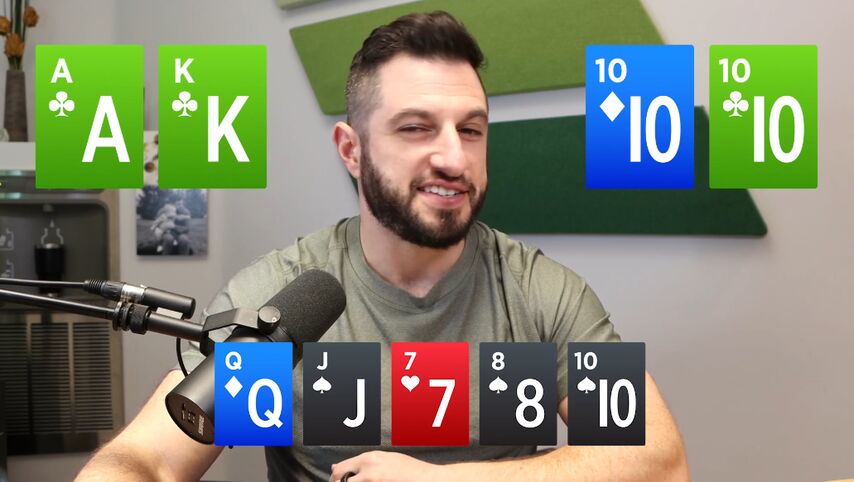
Of course! The most anticipated hand. I think in a practical game about 80% if not 90% of the time we will be shown a straight, and for a positive call you need to win at least once in three.
And, of course, it was possible to save money even preflop – in my opinion, folding to a 4-bet looked quite attractive.
In this video, the solver did not help us much, because we quickly went off the beaten path, but I personally was still interested! I hope you liked it too. Please email the giveaways you have questions to askphilgalfond@gmail.com. See you in new videos!
